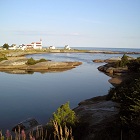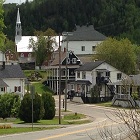Unique for its history, language and culture, the province of Québec is a place of freedom and creativity at the crossroads of the Old and the New World, where tradition and innovation combine with a contagious energy and joie de vivre! Discover an exceptional destination, four distinct seasons, an incredible natural heritage, an enriching human experience. You’ll be astonished by what Québec has in store for you!
Source: Tourism Québec

Montréal has everything a big city can offer. But Montréal is also one-of-a-kind, a multicultural city that blends its French accent with that of over 80 other ethnic communities and charms visitors with its Euro-American ambiance. Montréal is also innovative and invigorating, offering a whirlwind of cultural creations, both traditional and modern. Its downtown bustles with life at the foot of its mountain, while history is rooted in the old quarters near the river. With its year-round party atmosphere, Montréal beats to the rhythm of its festivals: jazz, comedy, cinema, fireworks and more!
Source: Tourisme Québec
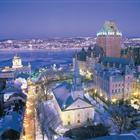
As you explore the winding side streets, on foot or in a horse-drawn carriage, the romance of the city will enrapture you. Curious about the past of this historical city? Stroll through its oldest neighbourhoods, like Petit Champlain, Place-Royale and the Old Port. Even though this capital city is steeped in history, the year-round activities are truly up to date: world-class winter carnival and summer festival, theatre, exhibitions... and the accommodations and dining are topnotch!
Source: Tourisme Québec
A true natural jewel of the Abitibi-Témiscamingue region, Parc national d'Aiguebelle is home to a variety of geological phenomenon with evocative names: giant's kettle, pillow lava...A 22-metre-high suspended walkway offers a thrilling crossing over a gigantic fault. From this vantage point you can admire scenery that has been deeply marked by the work of billions of years. A wide range of discovery activities explore a diversity of wildlife species: moose, beaver, mink, heron and osprey, to name just a few. In winter and summer alike, Parc national d'Aiguebelle is the perfect spot to take your time!
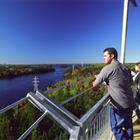
Somewhere between the river and the esker is a city and nature pure water . At the crossroads in the heart of Abitibi, a city about a century of history, forests, lakes and wealth. Lively friendly people, enriching activities and dynamic businesses, Amos is an environment where the environment is part spontaneously in the city. Riches of a unique heritage , its residents show a fulfilled life where work will succeed , sports , recreation , culture and happiness. Crossed by the Harricana River , a choice of life, a life choice.
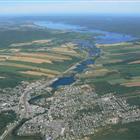
Angliers owes its existence to the construction of the power -des-Quinze in 1922. The village is built around 1924 and the forest industry and timber floating contribute greatly to its development. In 1938, the Canadian International Paper (CIP) built a big deposit and Forestry will own until the 1970s , a large supply of wood facing Angliers. The territory belonged to the beginning to the municipality of St- Eugène-de- Guigues, but the arrival of new settlers in 1930 led to the creation of the Municipality of Angliers in 1945.
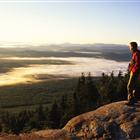
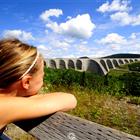
As the voluminous waves of the St. Lawrence unfurl at its feet, Baie-Comeau, daughter of forests and sea, beckons to the world beyond its port. As soon as you set foot here, the river’s constant presence will imprint a lasting memory on your senses, and the lure to traverse its waters to see marine mammals and wild ducks won’t subside until you give in to it. Located at the crossroads of the Manicouagan tourism region in an expanse the size of some countries, Baie-Comeau and its environs will surely captivate you with its superlative scenery.
Source: Town of Baie Comeau

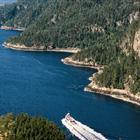

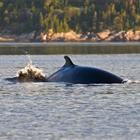
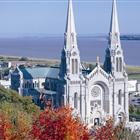

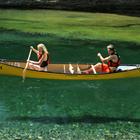
First, the sea surprises you with the quality and temperature of its water; this is where the Baie des Chaleurs gets its meaning. The serviced and supervised beach will definitely get your attention. As for the Bonaventure River, it will dazzle you with its extraordinary clearness. Canoes, kayaks and salmon fishing allow you to better understand the expression "to take it easy".
Source: Tourisme Gaspésie
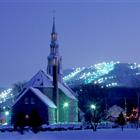
At the foot of the largest illuminated ski center in North America you’ll discover charming boutiques, restaurants and terraces as well as walking trails and beautiful green spaces. Winter or summer, enjoy a variety of activities: water park, skiing, mountain biking or cycling, superb golf courses, horseback riding, etc. With each sport comes relaxation; come pamper yourself in one of our famous health centers. In the evening, our concert halls offer diversified programs.
Source: Tourisme Bromont

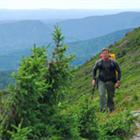
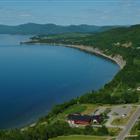
The seaside resort of Carleton-sur-Mer is one of the largest tourist centres in the Gaspé Peninsula. Its beaches, its magnificent sea and mountain landscapes, as well as the mild climate of the Bay have contributed, over the years, to the growth and development of many fine hotels and services that can be found in high quantity and quality.
Source: Tourisme Gaspésie


To the southeast of Montréal stretches a vast, bucolic and hilly territory that’s home to many vineyards, orchards and maple groves. Bordered by the St. Lawrence and bisected by the
History is everywhere in the Montérégie. The
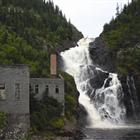
Chambord is an ideal starting point from which you can explore the pearls of the majestic Saint-Jean Lake. Among other things, you could for instance take advantage of the Véloroute des Bleuets (a cycle path whose looped circuit around the lake offers an unrivalled cycling experience perfectly suited to the needs of every bike touring enthusiast), the Val Jalbert Historic Village (a partially restored ghost town featuring 35 and 72-meter-high waterfalls and a fascinating industrial history), the Trou de la Fée Cavern (the ideal place for nature lovers or those wishing to try speleology for the first time), etc.
Source: Tourisme Québec
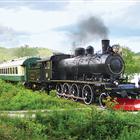



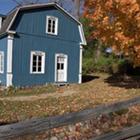
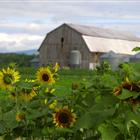
The sector of the Hautes-Laurentides will transport you into another reality altogether, thanks to its wide-open spaces and its 4,500 lakes and rivers. It’s the perfect way to get back to nature in a vast territory that is sure to awaken the explorer in you. Each new season will delight you with its particular brand of rugged beauty and stir those hidden forces within that have united man and nature since the dawn of time.
Source: Tourisme Laurentides
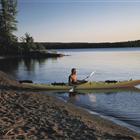
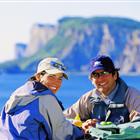
This region offers dramatic and grandiose landscapes. With its sharp cliffs, often very breathtaking, and a particulary rugged topography created by the Appalachians. You will notice an authentic maritime character and a wide variety of heritage treasures. At the Forillon National Park, a symbol of protection for natural heritage, the many attractions and activities are waiting to fascinate you and fill your days.
Source: Tourisme Gaspésie
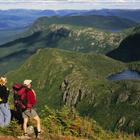
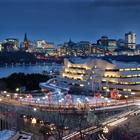
The city of Gatineau offers an exciting variety of activities. Enjoy our numerous festivals, great shows and why not try your luck at the Casino? Take advantage of our museums and spoil yourself with our endless choice of fine restaurants. And for nature lovers, outdoor activities are only a few minutes away. The City abounds with activities, whatever you fancy. With the majestic Gatineau Park and a network of recreational paths stretching over 170 km, the city of Gatineau is a destination of choice for outdoor enthusiasts! Take advantage of our great restaurants and the proximity of Ottawa to tour our national museums!
Source: Tourisme Outaouais
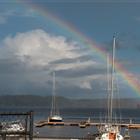

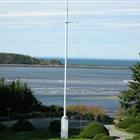
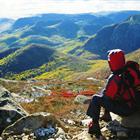
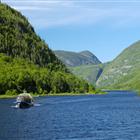
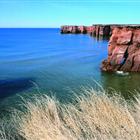
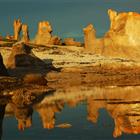
Magical Minganie is a destination in itself, with Mingan Archipelago National Park Reserve of Canada its feature attraction. Created in 1984, the Reserve encompasses hundreds of islands and coastal islets spread over 175 km from Longue-Pointe-de-Mingan to Aguanish, including the forty-odd Mingan Islands, which are among the most spectacular.Sparsely populated Minganie counts a handful of villages, one major center Havre-Saint-Pierre, and some 360 kilometers of picture-perfect coastline. Highway138 snakes along the shoreline, crossing rivers, lakes, peat bogs, forests, and mountains, and pausing along the way in tiny hamlets reminiscent of old-time fishing villages.
Source: Tourisme Duplessis
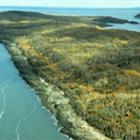

On Île Verte, the story is all about the sea – the blue sea of summer, the turquoise sea of autumn, the icy sea of winter, the sea bathed in the light of the rising moon or the setting sun. Under sunny skies or veiled by sea mist, the beaches, rocky shores, tidal flats and the tides themselves have written a new story each time you discover and rediscover them. Come experience the sea of today and hear the stories of the sea of yesteryear by taking the island’s self-guided tour.
Source : Municipalité de Notre-Dame-des-Sept-Douleurs
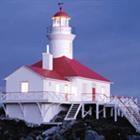
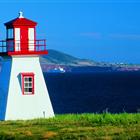
You get ready to stay in one of the oldest villages of the bottom-Saint Laurent. Set up as 1845, Isle-Verte is proud of its glorious past, due to its illustrious ancestors, its Courtyard of circuit and its prosperous industries. It also enjoys a world fame by its national Reserve of fauna.
The visible simplicity of Isle-Verte hides a patrimonial set which is classified among the most beautiful of Quebec. Take a few hours to discover the most significant places of its history: the house Louis-Bertrand, the former law court, the Shadowing, the church, the house Narcissus Bertrand and the house Girard.
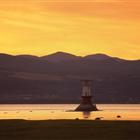
L’Isle-aux-Coudres is a splendid family destination. The Island contains an abundance of activities to correspond everyone’s tastes. From nature and outdoor lovers to history enthusiasts, the island really has it all. Whether your visit is by bicycle, by car or by feet; you will be charmed by the overwhelming scenery of L’Isle-aux-Coudres. And while there, make sure you meet its friendly inhabitants who will be thrilled to share their heritage with you and make your expedition more enjoyable.
Source: Tourisme Isle-aux-Coudres

Thirty minutes by car from Québec City, and you're in Parc national de la Jacques-Cartier. A large mountainous plateau dominates the park's landscape. It's home to some of Québec's loveliest glacial valleys, including a spectacular one that the Jacques-Cartier wends its way through. This river, calm in some places and turbulent in others, has cut a trough over 550 metres deep into the plateau. Up on the highlands is a boreal forest of yellow birch, sugar maples, and black spruce. Here, nature is both inspiring and serene.
Source: SEPAQ

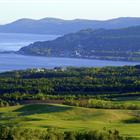
With its two hundred year tradition of hospitality and its proximity to Québec City, the Charlevoix region combines the majesty of mountainous landscapes with the splendor of the St. Lawrence as it changes from a freshwater river to a saltwater estuary. Charlevoix is synonymous with fresh air and wide open spaces, making it a choice destination for outdoor activities. For centuries, artisans, photographers, writers, and painters have been inspired by the region’s scenic beauty. Its workshops, boutiques, studios, and galleries will satisfy the most demanding art enthusiasts, and its distinguished restaurants will delight the most discriminating palates.
Source: Tourisme Charlevoix

With over 4,000 lakes, there is water aplenty in Réserve faunique La Vérendrye. This resource includes Grand lac Victoria and two huge reservoirs, Dozois and Cabonga, which are fed by rivers whose names evoke the local native cultures: Chochocouane, Capitachouane, des Outaouais, and Gens de Terre. This is a paradise for canoe-campers and anglers, one that straddles the Outaouais and Abitibi-Témiscamingue regions. Keep your eyes peeled when you're on the great reservoirs! The landscape can change without notice, with floating islands altering the panorama. The fussiest vacationer will appreciate the soft life at Le Domaine. Campers too are pampered, since La Vérendrye has over a thousand campsites
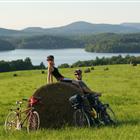

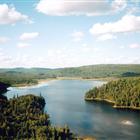
The superficiy of the town of Lac-Édouard makes it the third largest in the Mauricie region, but in term of population, this is the smallest! Located in the heart of the Laurentian Mountains, its pristine territory features more than 300 lakes and a rich fauna (moose, bears, deers, etc.).
Source: Municipalité de Lac Édouard
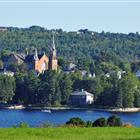

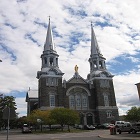
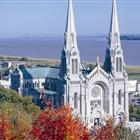
The Côte-de-Beaupré region is the perfect setting for a thrilling vacation like no other. The area’s plentiful waterfalls, canyons, mountains, and wildlife put the great in our Great Outdoors. Nature lovers, sports enthusiasts, hikers, and vacationers will all be in their element! Between land and sea, 200 km of hiking trails spanning the whole of the Côte-de-Beaupré area offer breathtaking panoramas and some of the most beautiful landscapes in all of Québec. Also, the Route de la Nouvelle-France is becoming more and more popular with cyclists, who take advantage of their ride to discover the well preserved heritage of the region.
Source: Tourisme Côte-de-Beaubré
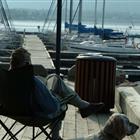
Located between the majestic Fjord and the rugged mountains of the Saguenay back country, L'Anse-Saint-Jean boasts a fascinating historical heritage. Surrounded by both the Saguenay National Park and the Saguenay/St. Laurent Marine Park, the natural beauty of the village attracts outdoor enthusiasts as well as those simply looking for a peaceful setting to relax.
Source: Municipalité de l’Anse-Saint-Jean
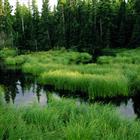

Réserve faunique des Laurentides lies between the Québec City and Saguenay-Lac-Saint-Jean regions. It's a huge 7,861-km² territory. Hunters, anglers, and outdoor enthusiasts engage in their favourite activities in pristine wilderness surroundings. Wildlife is omnipresent!
Source: SEPAQ

The area is known for its picturesque headlands, bays, coves, islands and mountains, where thousands of seabirds nest, rare plants bloom and seals congregate.
Source: Tourisme Bas-Saint-Laurent
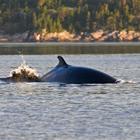
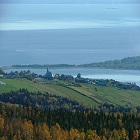

Founded in 1846, Les Escoumins is the gateway to the eastern sector of the Saguenay–St. Lawrence Marine Park. Discover the beauty of the marine life that makes this area one of Canada’s best diving destinations. Whale-watching cruises, observation of marine mammals from the shore, sea kayaking, salmon fishing, a stay in an outfitter camp and snowmobiling are all activities that will immerse you in this natural environment. Discover the scenery around Escoumins Bay by hiking or cycling the Moulins trail and exploring the boardwalk and the Pointe-de-la-Croix historic site.
Source : Tourisme Manicouagan
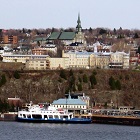
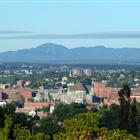
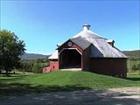
Potton Township, created in 1797, covers a vast hilly area on the western shores of Lake Memphremagog, from Knowlton Landing to Highwater, and including Mansonville. Its scenic country roads meander through picturesque hamlets, home to residents from 20 different nationalities. Its exceptional landscapes made it a popular vacation destination as of 1845, with Owl’s Head Mountain House accessible only via the lake. Outdoor activities abound: skiing and golfing at Owl’s Head; cycling, kayaking, and hiking on the trails of the Ruiter Valley Land Trust; and hiking on the trails of the Sentiers de l’Estrie and the Réserve naturelle des Montagnes-Vertes. A stop on the Townships Trail, the village of Mansonville is well worth a visit with its round barn (1911), public market, and bakery. And then there are Potton’s mysteries, which a visit will enable you to discover.
Source: Tourism Eastern Townships
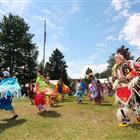
Mashteuiatsh was created in 1856, on a site where Québec's First Nations have gathered for a thousand years. Located on the shores of Pekuakami (Lac Saint-Jean), Mashteuiatsh welcomes you to the only Aboriginal community in the region. From Mashteuiatsh, you'll enjoy a spectacular view of Pekuakami-a veritable inland sea. Mashteuiatsh: encountering a unique people whose vibrant history and culture date back a thousand years. We look forward to welcoming you in our community!
Source: Communauté de Mashteuiatsh

Located next to the River, Matane is composed of foreshores and terraces, and its name is derived from a Micmac word meaning "beaver pond". Its undeniable maritime character reveals itself in many ways. At the Matane-sur-Mer harbour, you will find, among other things, ferry services, which offer passage towards the Côte-Nord, including the only train ferry in Québec. It also houses a shipyard and a shrimp plant specializing in the famous "Matane shrimp". A little bit further east, the old maritime lighthouse now houses the Tourist Welcome Bureau and a museum of ancient objects.
Source: Tourisme Gaspésie
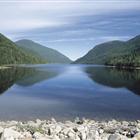
The largest member of the deer family in Québec is everywhere in Réserve faunique de Matane. Over 6,000 moose share 1,282 km2, an incredible population density! A moose interpretation centre and a wide range of observation and interpretive activities are available for those who want to learn more about this animal. There are also a number of mountain peaks close to 1,000 metres high. Hikers can admire breathtaking views from atop these vantage points.
Source: SEPAQ
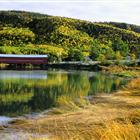

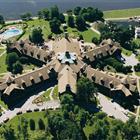
With its international reputation, Montebello is a four-season destination where hospitality is at its best. Bordering the Ottawa River and with two marinas, it allows vacationers to enjoy a wide array of activities, such as golf, horseback riding, cross-country skiing, snowshoeing, hiking, hunting and fishing. Great restaurants, the Omega Park, the impressive Fairmont Le Château Montebello, beautiful inns and charming B&Bs make Montebello a top destination.
Source: Tourisme Outaouais
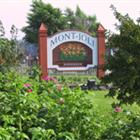
Four kilometres south of Sainte-Flavie. Mont-Joli owes its name to the presence of a pretty little hill from the top of which there is a wonderful view of the coast and the Mitis River. A central town located in the heart of the Mitis region, Mont-Joli has the largest regional airport in Eastern Québec and the longest karting track in Québec. The famous Reford Gardens are located at only a few kilometres from Mont-Joli. Mont-Joli is an ideal spot for snowmobiling enthusiasts.
Source: Tourisme Gaspésie

The sector of the Hautes-Laurentides will transport you into another reality altogether, thanks to its wide-open spaces and its 4,500 lakes and rivers. It’s the perfect way to get back to nature in a vast territory that is sure to awaken the explorer in you. Each new season will delight you with its particular brand of rugged beauty and stir those hidden forces within that have united man and nature since the dawn of time.
Source: Tourisme Laurentides
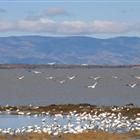
No stress and no traffic! Montmagny and the Islands offer a nice and salty adventure. Grosse-Île, also known as quarantine island, allowed thousands of immigrants to bask in happyness and faith and L’Isle-aux-Grues promises special cultural events with its fête de la Mi-Carême, its cheese factory and its slow-paced lifestyle. Montmagny offers a unique European style down-town and its surrounding villages offer a multitude of activities and services all based on the St-Lawrence River. Finally, Montmagny and the Islands offer live regional culture, special regional products and a rich religious and natural history.
Source : Tourisme Chaudière-Appalaches

Montréal has everything a big city can offer. But Montréal is also one-of-a-kind, a multicultural city that blends its French accent with that of over 80 other ethnic communities and charms visitors with its Euro-American ambiance. Montréal is also innovative and invigorating, offering a whirlwind of cultural creations, both traditional and modern. Its downtown bustles with life at the foot of its mountain, while history is rooted in the old quarters near the river. With its year-round party atmosphere, Montréal beats to the rhythm of its festivals: jazz, comedy, cinema, fireworks and more!
Source: Tourisme Québec
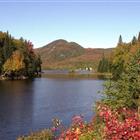
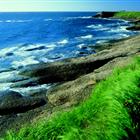

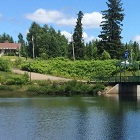
Our municipality deserves to be discovered. Located in a region of a huge untapped potentiality, the possibilities are infinite. Notre-Dame-de-la-Merci is an excelent holiday resort.
Come to discover this beautiful part of the country!

On the shores of the St. Lawrence, coastal levees and hills give way to a land of forests, winding rivers and lakes. When the setting sun makes the water sparkle and the tidal flats gleam, and the ferry skirts the shadows of islands that are home to countless seabirds, the Bas-Saint-Laurent, one of the five regions of maritime Québec, is at its most moving!
Source : Québec Maritime
Oka is a Quebec city located in the county of Deux-Montagnes in the Laurentides region.
Source: Wikipedia

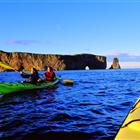
This fascinating site has attracted visitors since the 1930s, when it became a very popular cultural centre. Many artists were attracted and charmed by the colourfulness of the fishermen and the magnetism of the site. Percé continues to enjoy a vibrant cultural life. There are more than twenty spots where one can see exhibits presenting a variety of artistic disciplines. Whether you are arriving from the north by way of Pic de l’Aurore or from the south via Côte Surprise, the setting will astound you. The magnificence of the Rocher Percé and the Bonaventure Island with its thousands of Northern Gannets, guarantee you wonderful memories.
Source: Tourisme Gaspésie
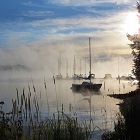
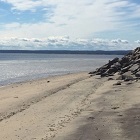
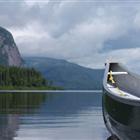
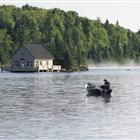
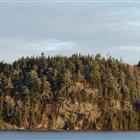
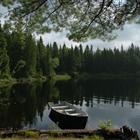
Watch out, or you may fall under Québec City's spell—it's the only fortified city in North America! As you explore the winding side streets, on foot or in a horse-drawn carriage, the romance of the city will enrapture you. Curious about the past of this historical city? Stroll through its oldest neighbourhoods, like Petit Champlain, Place-Royale and the Old Port. Even though this capital city is steeped in history, the year-round activities are truly up to date: world-class winter carnival and summer festival, theatre, exhibitions... and the accommodations and dining are topnotch!
The outskirts of Québec City are simply enchanting. In just a few minutes, you could find yourself deep in the countryside or in the heart of one of the large natural parks. The Chute Montmorency alone (83 m / 272 ft. high) is a magnificent waterfall well worth the detour. Characterized by abrupt dips in the landscape, the Parc national de la Jacques-Cartier is sure to leave you speechless. Venture through the marshes at the Cap Tourmente National Wildlife Area to observe up close 300 species of birds, including the tens of thousands of snow geese that visit twice a year, in the spring and fall. This region is a sports lover's paradise both in summer and winter, with spectacular golf courses and majestic ski slopes like Mont Sainte-Anne and Stoneham.
This region, the birthplace of the province, features many ancestral villages all along the legendary Chemin du Roy (King's Road), the first vehicular highway in Canada, and on Île d'Orléans, whose rural charm was so perfectly described in the songs of Félix Leclerc. On the edge of the downtown area, discover the traditions of the Huron-Wendat people in the village of Wendake at the Onhoüa Chetek8e site. The Sainte-Anne-de-Beaupré Basilica is a pilgrimage site that attracts over one and a half million visitors each year. Interested in exploring the area by bicycle? Check out one of the trails on the Route verte, such as the Chemin du Roy, or the Corridors des Cheminots and the Corridor du Littoral, along the St. Lawrence River towards Beauport and the Parc de la Chute-Montmorency. Finally, for a winter experience beyond compare, spend a night or two at the ice hotel, built every year near Lac Saint-Joseph! Nature and culture… it's all yours in the Québec City region!
Source : Tourisme Québec
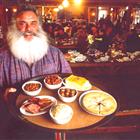
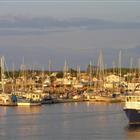
On the shores of the St. Lawrence, coastal levees and hills give way to a land of forests, winding rivers and lakes. When the setting sun makes the water sparkle and the tidal flats gleam, and the ferry skirts the shadows of islands that are home to countless seabirds, the Bas-Saint-Laurent, one of the five regions of maritime Québec, is at its most moving!
Source : Québec Maritime
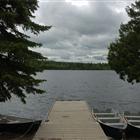
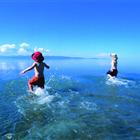
On the shores of the St. Lawrence, coastal levees and hills give way to a land of forests, winding rivers and lakes. When the setting sun makes the water sparkle and the tidal flats gleam, and the ferry skirts the shadows of islands that are home to countless seabirds, the Bas-Saint-Laurent, one of the five regions of maritime Québec, is at its most moving!
SourceQuébec Maritime
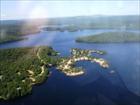
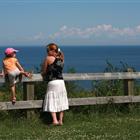
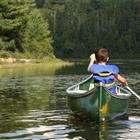
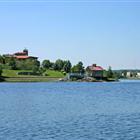

Located on the Saguenay Fjord, Sacré-Coeur is a unique natural harbour that can be discovered on both the Fjord and Whale routes. Hike the fjord trail to discover the historical and natural bounty of this exceptional region. Renowned for spectacular sunsets and a fantastic view of the fjord, the Anse-de-Roche discovery site and picturesque marina are a great home base for marine activities such as sea kayaking and fishing excursions. The beautiful scenery extends from the valley of the Sainte-Marguerite River (a salmon river) to Bardsville, a favourite destination for anglers.
Source: Tourisme Manicouagan
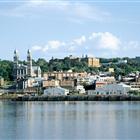
With a host of activities for every season, Saguenay is the perfect vacation destination! A unique Fjord, vibrant urban life, breathtaking landscapes—what more could you ask for?
Source: Ville de Saguenay
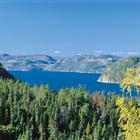
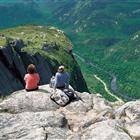
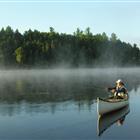
You are sure to be seduced by the region's beautiful landscape and the warmth and hospitality of its inhabitants. The Saint-Alexis-des-Monts’ surroundings feature an enchanting region of natural splendor that offers everything outdoor enthusiasts could ask for. The area's stunning scenery, with its winding rivers and hundreds of lakes nestled among breathtaking mountains, never fails to impress visitors. The territory provides an ideal habitat for a wide variety of animals and birds including moose, black bears, beaver, hares, ruffed grouse, loons, herons and many others.
Source: Tourisme Québec
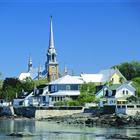
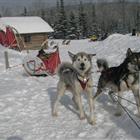
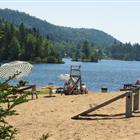


Nestled at the hollow of a cove, between sea and mountains, the town of Sainte-Anne-des-Monts proudly opens the gate to the famous Gaspésie National Park. A hiking hotspot, this national park gives visitors access to an extraordinary mountain environment. The Chic-Chocs and McGerrigle Mountains cross the park. Among them, Mont Jacques Cartier is the second highest peak in Québec. The altitude of these mountains deeply influences the climate that moulds the landscape and creates a diversity of species unique in Québec. Arctic-alpine plants and tundra landscapes form a habitat for a herd of woodland caribou, the last representatives of these species south of the St. Lawrence.
Source: Tourisme Gaspésie, SEPAQ
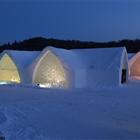
This flower-filled village is close to the entrance of an ancient glacial valley through which the Noire River once rushed. Here is the start of a branch of the Matawinie trail, which runs along the edge of a forest that seems limitless in size. Also, the closest outfitters to Montreal can be found here. Other attractions include a public beach, the National Trail (Sentier national), Lac Koël hiking trail, snowmobile trails, outdoor recreational centre, inns and gîtes (B&Bs). For superb panoramic views, take Rang de la Seigneurie, which brings you to Saint-Jean-de-Matha.
Source : Tourisme Lanaudière

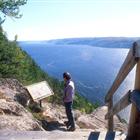
Here the Saguenay River winds through a majestic fjord whose breathtaking rocky walls hold their own special fascination. To the north extends a wild territory of forests and lakes simply brimming with adventure. The area also boasts several national parks including the famous Saguenay National Park which features the spectacular beauty of the Saguenay Fjord. Moreover, this picturesque village earned the honor of being selected in the prestigious club of Québec’s most beautiful villages.
Source: Ville de Sainte-Rose-du-Nord
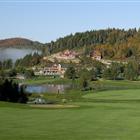
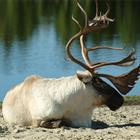
Saint-Félicien is an ideal base to explore the pearls of the Lac-Saint-Jean area. If you like the idea of seeing animals roaming free in their natural habitat, the Zoo sauvage de Saint-Félicien offers up a range of activities based on interacting with wildlife. Add a dash of history to your stay by stopping by the Val-Jalbert Historic Village. Moreover, the Montagnais share their stories, history and cultural heritage at the Musée amérindien de Mashteuiatsh.
Source: Tourisme Québec

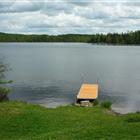

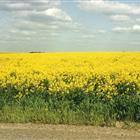
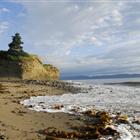
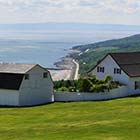
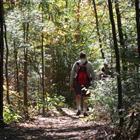
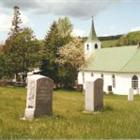
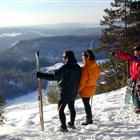
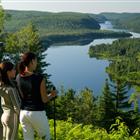

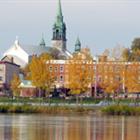

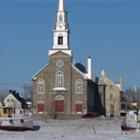
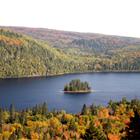
You are sure to be seduced by the region's beautiful landscape and the warmth and hospitality of its inhabitants. The Saint-Mathieu0du-Parc’s surroundings feature an enchanting region of natural splendor that offers everything outdoor enthusiasts could ask for. The area's stunning scenery, with its winding rivers and hundreds of lakes nestled among breathtaking mountains, never fails to impress visitors. The territory provides an ideal habitat for a wide variety of animals and birds including moose, black bears, beaver, hares, ruffed grouse, loons, herons and many others.
Source: Tourisme Québec

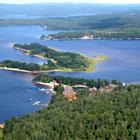


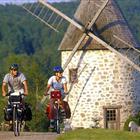
You are sure to be seduced by the region's beautiful landscape and the warmth and hospitality of its inhabitants. The Saint-Paulin’s surroundings feature an enchanting region of natural splendor that offers everything outdoor enthusiasts could ask for. The area's stunning scenery, with its winding rivers and hundreds of lakes nestled among breathtaking mountains, never fails to impress visitors. The territory provides an ideal habitat for a wide variety of animals and birds including moose, black bears, beaver, hares, ruffed grouse, loons, herons and many others.
Source: Tourisme Québec
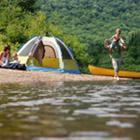
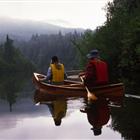
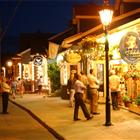
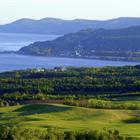
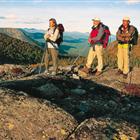
Charlevoix can thank a meteorite that fell on Earth some 350 million years ago for its magnificent geography. In 1988, a large part of the region was designated a UNESCO Biosphere Reserve. In this jealously guarded territory, two national parks are a haven for nature lovers: Parc national des Hautes-Gorges-de-la-Rivière-Malbaie, where deep valleys slice through imposing peaks; and Parc national des Grands-Jardins, land of taiga, tundra and caribou. It goes without saying that the region is a heaven for hikers, cross-country skiers and snowshoers.
Source: Tourisme Québec
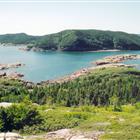
You’ll find that the friendly city of Sept-Îles perfectly embodies the dynamic personality of a region whose gaze is half turned seaward, half inland toward its rich backcountry resources. From Labrador to the Gulf of St. Lawrence, Duplessis offers up forests as far as the eye can see and a coastline punctuated with broad, powerful rivers, with beaches that are among the finest in Québec. Along the Whale Route, rorquals and other large cetaceans (sea mammals) can be seen frolicking on the water’s surface.
Source: Tourisme Québec
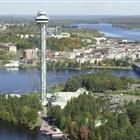
The Mauricie region extends into the heart of the boreal forest, covering 40,000 km2 (15,440 sq. mi.). The backcountry, a vast forested domain punctuated with lakes and rivers, is a veritable outdoor paradise.The region’s industrial heritage is remarkably displayed in the Cité de l'énergie (city of energy) theme park, located alongside the Chutes de Shawinigan (Shawinigan falls). This theme park, the only one of its kind in Canada, offers visitors of all ages a thrilling, entertaining and educational experience.
Source: Tourisme Québec
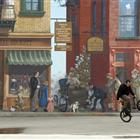

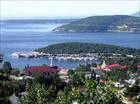
The first official North American member of the Most Beautiful Bays in the World Club and the first Canadian site to celebrate its 400th anniversary (in 2000), Tadoussac, the cradle of New France, occupies a special place in our historic heritage. Canada’s first official fur trading post was established here in 1600, at the confluence of the Saguenay Fjord and the St. Lawrence River. Recognized as one of the best sites in the world to observe such sea mammals as belugas, seals and whales, this prime resort town has achieved an international reputation.
Source: Tourisme Manicougan
Only 20 minutes north of Québec City, the area offers a first class outdoor experience. Wheter on the slopes of the Stoneham ski center, during a whitewater rafting expedition on the mighty Jacques-Cartier River or on one of the 36 holes of the local golf course, the visitors can take advantage of a wide selection of activities in a great natural setting.
Source : ville de Stoneham et Tewkesbury.
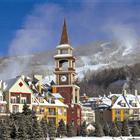
The Mont-Tremblant National Park, proud defender of the fauna and flora, welcomes thousands of visitors each year! Massive mountains, including the highest summit in the Laurentians, will change your perspective of the world! Three villages will charm you with the diversity of their restaurants and their cultural abundance! Explore the region and discover what nature has best to offer.
Source: Tourisme Mont-Tremblant
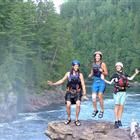
Whether you’re here for an outdoors family vacation, the adrenaline of a sport getaway or a hike through the mountains, Québec’s real nature has it all. Paddle along the majestic Saint-Maurice, raft on the turbulent waters of the Mattawin River or enjoy canoe-camping in the region’s wildlife reserves… The possibilities are endless…like the beauty and size of the territory.
Source: Tourisme Mauricie
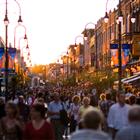
Founded in 1634 by the Sieur de Laviolette, it is North America’s second oldest French-speaking city. Trois-Rivières was for many years a key fur trading post. Starting as an industrial city based on the iron and logging industries, it went on to become a university and port centre and is now a dynamic tourist destination buzzing with energy and vitality. A place where history and culture are tightly intertwined, Trois-Rivières showcases its urban charm and cultural character through the many workshops, art galleries, museums and concert halls that underscore its distinctive character.
Source: Tourisme Québec
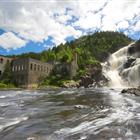
Heritage City of art and entertainment, succumb to the charms of Ville-Marie ! Capital and birthplace of Témiscamingue. Come enjoy the fair gourmet, browse cycle routes, special admire works of art biennial if miniature, visit the cave and the house of Frère-Moffet… There to do so, to taste and see up sunset on the majestic lake Témiscamingue. Today, take a new cap : Ville-Marie sur le Lac.
Heritage City of art and entertainment, succumb to the charms of Ville-Marie ! Capital and birthplace of Témiscamingue. Come enjoy the fair gourmet, browse cycle routes, special admire works of art biennial if miniature, visit the cave and the house of Frère-Moffet… There to do so, to taste and see up sunset on the majestic lake Témiscamingue. Today, take a new cap : Ville-Marie sur le Lac.
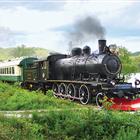
Nestled in a postcard-perfect setting along the Gatineau River, the bilingual village of Wakefield possesses a friendly and funky atmosphere created by its diverse residents and nurtured by its surroundings. Whether you're into nature, art, music, outdoor adventure, shopping, or fine food, you'll fall in love with this place. Incredibly, this peaceful utopia is a mere 20 minute drive from downtown Ottawa, Canada's capital city. A spectacular natural setting with access to a world-class city is what makes Wakefield a truly unique and remarkable village.
Source: Town of Wakefield
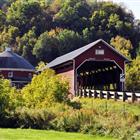

Twenty minutes from downtown Québec City, Wendake is the only Huron-Wendate community in Canada. Come visit, for example, the First Nations Hotel, the Huron-Wendat Museum and the Traditional Huron Site.
Source: Tourisme Wendake

